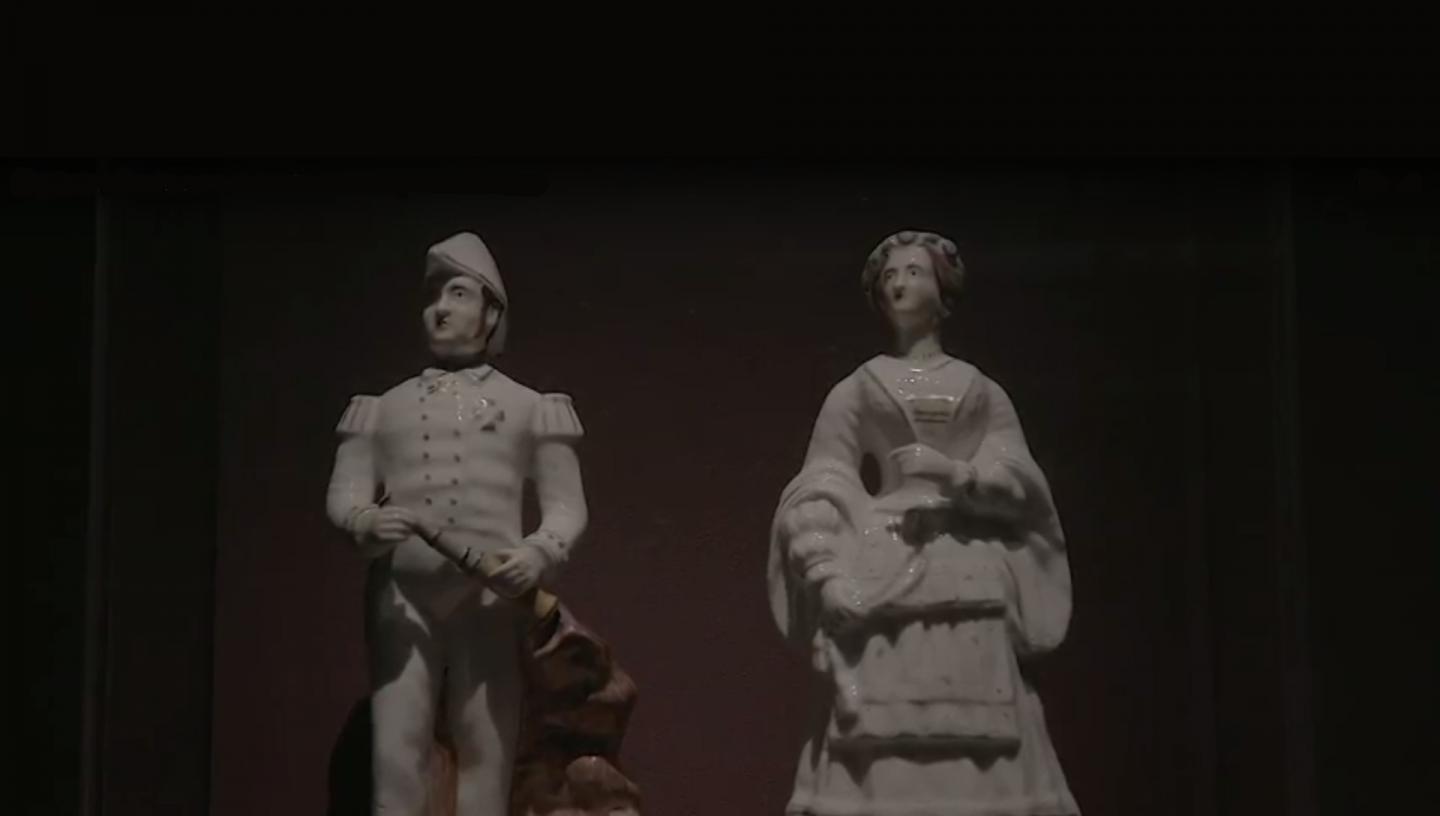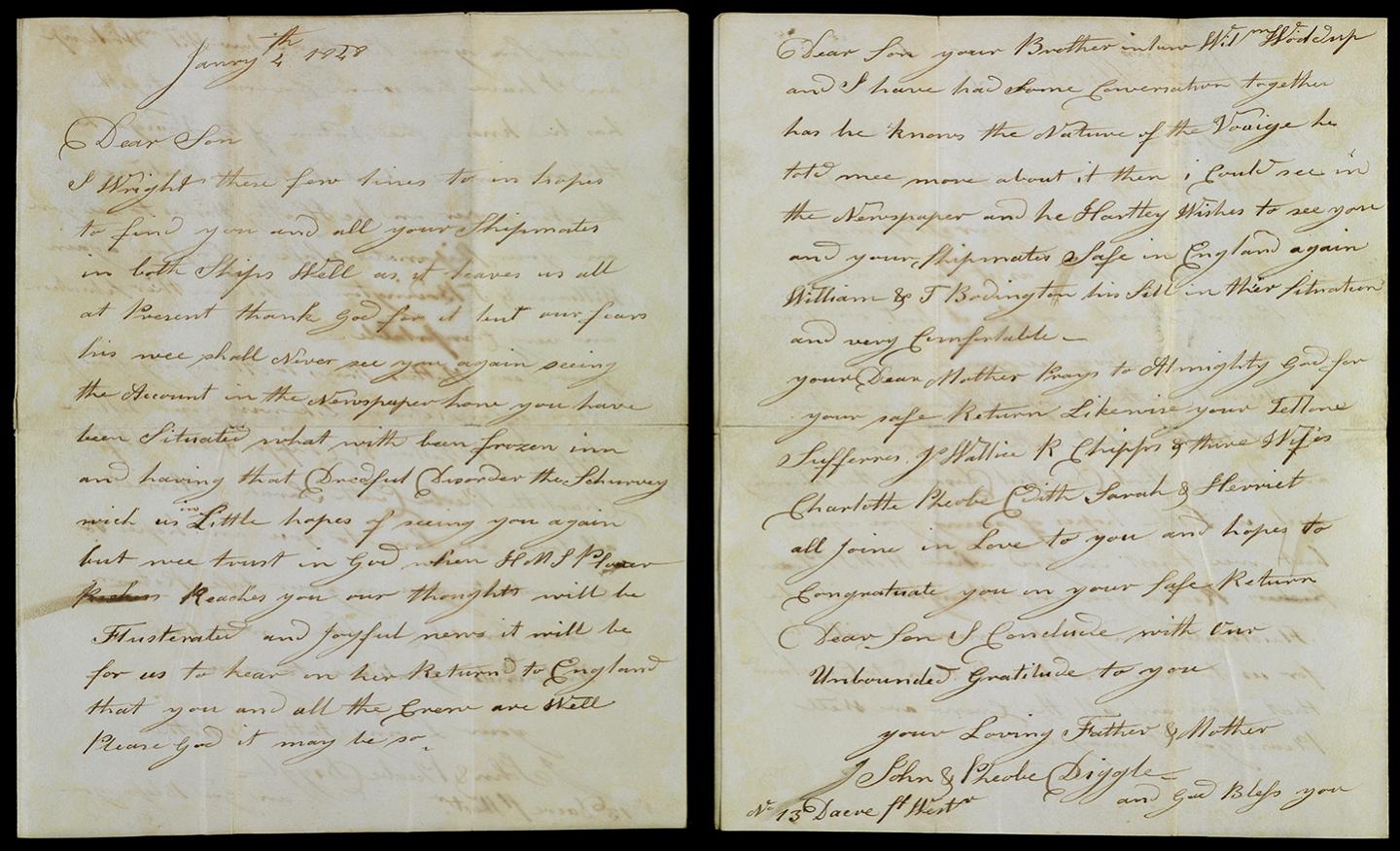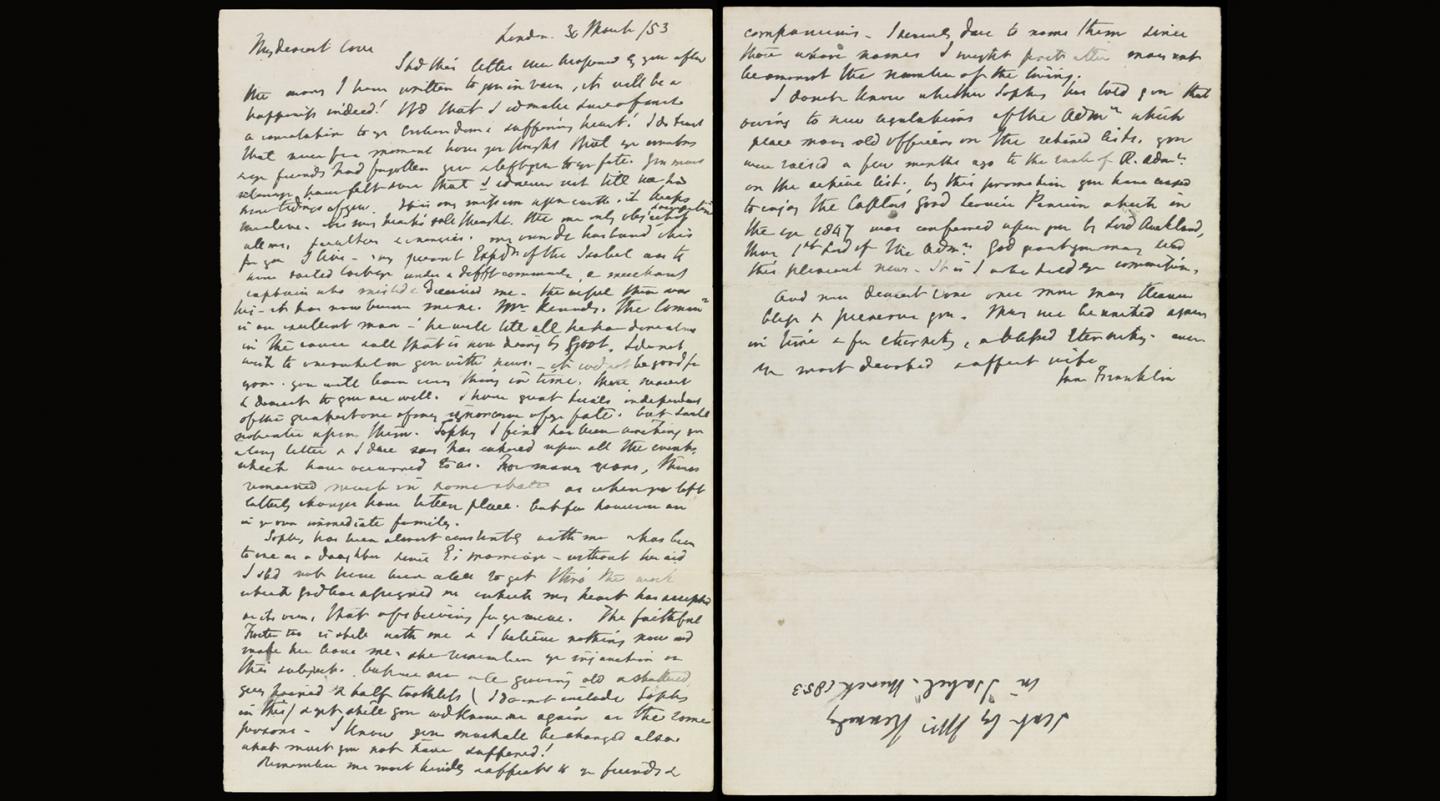
When her husband went missing Jane Franklin studied the Arctic from afar, becoming an armchair expert in its geography and becoming the first woman to be awarded the Royal Geographical Society’s Founder’s Medal.
Dr Claire Warrior, Senior Exhibitions Curator, tells the story of how Lady Franklin influenced both the search for husband John Franklin and how he is remembered today.
In the days before email
It’s always hard to say goodbye to someone, particularly when they’re off on a long journey and will be away for some time. But modern technologies now mean that, just about wherever we travel in the world, we can usually communicate with those we love back at home without too much delay. Mobile phones, e-mail and other digital technologies have, in the space of thirty years, revolutionised our ability to keep in touch.
The transmission of information across the globe was not always so rapid. In 1845, when the ships HMS Erebus and HMS Terror set sail for icy Arctic waters, hoping to complete the final 900 miles of the Northwest Passage, the friends and family of the men on board knew that they were saying goodbye for several years at least.
The ships’ crews were heading into what was, for them, the unknown – although considerable progress had been made in mapping and charting the region, much was still literally blank space to European voyagers. (This was not the case, of course, for Inuit communities, who had lived in the Arctic for thousands of years and developed extensive geographical knowledge of the region that was passed down orally). The British seamen knew that they would be unlikely to make the Passage in their first season, and had several years’ worth of provisions to sustain them, particularly in the form of tinned foods. They would be following the template set by earlier explorers in overwintering aboard ship. Entertainment was provided, in the form of musical instruments and props for amateur theatrical performances, and this lengthy isolation would also provide the opportunity for lower-deck sailors to learn to read and write.
No news from the travellers
The initial silence from the expedition was therefore to be expected. But a lack of word gradually caused anxiety among those waiting patiently at home. The veteran polar explorer John Ross raised his concerns, while Franklin’s wife, Jane, who had encouraged her husband to take the commission in the first place, started to lobby the Admiralty for search parties to be sent. A prolific letter-writer, she wrote to and drew upon her influential political contacts to demand that searches be mounted, and expeditions were, indeed, despatched, with the hope of finding survivors and bringing them home. Families sent letters with the search expeditions, in the hope that their words might reach their loved ones as soon as possible. The parents of John Diggle, the cook aboard HMS Terror, sent him this letter in January 1848 (pictured below).
They wrote:
"…when HMS Plover Reaches you our thoughts will be Flusterated and joyful news it will be for us to hear…that you and all the Crew are Well. Please God it may be so."
This final plea expresses the fading hope and increasing anxiety that many families must have been feeling by this time. While the ships had been provisioned for three years, and could expect to augment their stores by hunting, time was surely running out. Lady Franklin kept up the pressure, ensuring that her husband’s name remained in the public eye.
An extraordinary woman
Jane Franklin was, by all accounts, an extraordinary woman. Ambitious, well-travelled and well-connected, she used her pen and her own monetary resources to make the search for her husband’s expedition a global affair, obsessively ensuring that he was not forgotten and demonstrating her consummate skill in shaping public opinion. She studied the Arctic from afar, becoming an armchair expert in its geography in her own right, and was the first woman to be awarded the Royal Geographical Society’s Founder’s Medal in 1860.
While it is easy to dismiss Lady Franklin as driven and manipulative, we should perhaps consider her love for Sir John. If nothing else, she continued writing to him, sending out letters with the search expeditions. This letter (pictured below) was composed in 1853, eight years after her husband had set sail. Her devotion is apparent. She wrote:
"You must always have felt that I would never rest till I had more tidings of you….It is my heart’s sole thought; the one and only object and occupation of all my faculties and energies. My own dear husband it is for you I live."
Lady Franklin helped to financially support the fitting out of five search ships between 1850 and 1857, with Leopold McClintock’s expedition in the yacht Fox finally providing written evidence of the men’s fate. As time passed, and this disastrous end to the expedition was revealed, Lady Franklin undoubtedly helped to shift the narrative around it so that a tragic disaster became publicly understood as a heroic endeavour and martyrdom, her husband lionised as the apparent discoverer of the Northwest Passage.
Before she died, she ensured that Sir John Franklin was memorialised in London, both in a statue in Waterloo Place (she would have preferred Trafalgar Square) and a monument in Westminster Abbey. The latter was inscribed ‘…erected by Jane, his widow, who, after long waiting, and sending many in search of him, herself departed, to seek and to find him in the realms of light…’.

